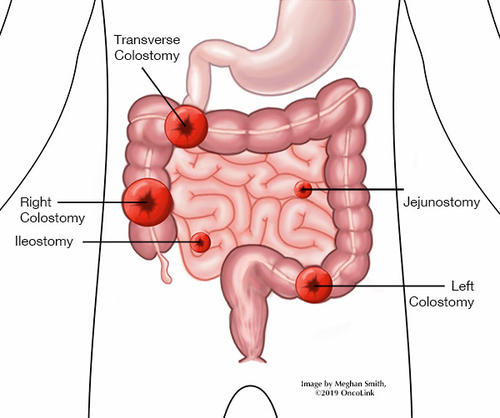Colostomy in Dominican Republic
Find the best clinics for Colostomy in Dominican Republic
No clinics available
Tunisia offers the best prices Worldwide
Price: $ 1,314

WHY US?
At Medijump, we're making medical easy. You can search, compare, discuss, and book your medical all in one place. We open the door to the best medical providers worldwide, saving you time and energy along the way, and it's all for FREE, no hidden fees, and no price markups guaranteed. So what are you waiting for?

Free

Best Price

Widest Selection

Risk-Free
What you need to know about Colostomy in Dominican Republic

Colostomy is a surgical procedure where a part of your colon is routed through an opening in the stomach. This new opening called a stoma, lets waste pass from your body.
After the Colostomy, you'll need to make a few lifestyle changes. Habits around cleanliness and food will change. But remember, with proper advice and support, these changes can be managed effectively. You might think it sounds daunting, but with the right support and the medical know-how in Dominican Republic, you can get back to a comfortable, regular life. Step by step, you’ll feel more confident. So if this Colostomy is coming up in your life, bear in mind that you're not alone. You have a fantastic team around you to get you back to a more comfortable life, right here in Dominican Republic.
What is the cost of a Colostomy in Dominican Republic?
There are several things to consider when it comes to the cost. The first is the hospital where the surgery will take place. Then you have to consider your surgeon's experience level - the more experience, potentially the higher the cost. Add to that the complexity of your health situation and the type of colostomy surgery you need. Some facilities might charge more, and there could be additions for any extra care or special items you need post-surgery.
It's always a good idea to talk with your healthcare provider or insurance company. They can give you a clear picture of the costs. That way, you can plan and budget properly. Being prepared financially makes the whole process a lot smoother.
What does a Colostomy Procedure Involve?
During a Colostomy procedure, the patient is unconscious under the effect of general anaesthesia. The surgery could be via laparotomy- a long incision made in the tummy or laparoscopic- several smaller cuts utilising a tiny camera and surgical tools. The preferred choice is laparoscopic surgery because of its reduced risk and quicker recovery time.
The surgery can be of two main types: a loop colostomy and an end colostomy, decided as per individual necessities. Loop colostomy is normally used in case of a temporary colostomy as it is easier to reverse.
How Long Should I Stay in Dominican Republic for a Colostomy Procedure?
How long you need to stay in Dominican Republic after the Colostomy, can vary from person to person. It depends on how healthy you are and the rules of the hospital where you are treated.
Usually, patients stay in the hospital for a few days after the Colostomy. This allows the doctors and nurses to take care of any pain and make sure the stoma is healing. After leaving the hospital, you may still need to stay in Dominican Republic for follow-up visits or to make sure you can get medical help quickly if needed.
Even though you might want to go home sooner, be sure to talk to your doctors about how long they believe you should stay.
What's the Recovery Time for Colostomy Procedures in Dominican Republic?
On average, people take a few weeks up to a few months to fully recover from a Colostomy. The timeline is set by factors like your body's healing speed, what exactly your procedure involved, and how fast you adjust your lifestyle post-surgery.
It is advised to not rush your recovery and allow your body the time it needs to heal. Don’t be in haste to return to your old schedule too fast. Trust your doctor’s advice – they'll tell you when you’re ready.
What sort of Aftercare is Required for Colostomy Procedures in Dominican Republic?
When it comes to aftercare for a Colostomy, it’s all about giving your body the best care and support it needs to heal. Aftercare typically includes adjusting to your stoma, keeping the area clean, learning how to change the stoma bag, and managing your diet.
The area around your stoma needs thorough and regular cleaning to prevent infection. Your healthcare team will provide precise instructions regarding this. And don't worry if you're unsure how to change your stoma bag initially, they'll show you how until you feel comfortable doing it yourself.
Diet plays a key role too. Certain foods may cause gas, odor, or affect the consistency of your waste. Your healthcare provider should educate you about this and offer dietary advice tailored to your needs.
What's the Success Rate of Colostomy Procedures in Dominican Republic?
Colostomy has a notable success rate. However, various factors contribute to this success such as the patient's health status, surgical methods used, the operating surgeon's skill, and post-surgery care.
According to research, Colostomy generally alleviates symptoms thereby improving quality of life. Most patients gradually return to their regular activities following this procedure. However, individual outcomes may vary.
For more comprehensive information adapted to your particular health condition, please consult with a healthcare professional in Dominican Republic.
Are there Alternatives to Colostomy Procedures in Dominican Republic?
While the Colostomy is the go-to solution for certain problems with the colon, there are other options available depending on your diagnosis, overall health, and daily lifestyle needs.
There could also be other surgical procedures that might suit your case better. For instance, there's an operation called an ileostomy, where the surgeon brings the small intestine to the surface of your abdomen, instead of the colon.
However, keep in mind, that not every alternative fits everyone. Each case is unique; each solution needs to be custom for you. That's why it's best to discuss all available options with your doctors in Dominican Republic.
What Should You Expect Before and After the Procedure
Before a colostomy, you may have some disease or at risk of cancer. The colostomy procedure will treat your condition. After a colostomy, you need to wear a colostomy bag, which is where your feces will collect. However, it is secure and discreet so that it does not interfere with your daily life.
Whilst the information presented here has been accurately sourced and verified by a medical professional for its accuracy, it is still advised to consult with your doctor before pursuing a medical treatment at one of the listed medical providers
No Time?
Tell us what you're looking for and we'll reachout to the top clinics all at once
Enquire Now

Popular Procedures in Dominican Republic
Prices Start From $853

Prices Start From $47

Recommended Medical Centers in Dominican Republic for procedures similar to Colostomy

- Interpreter services
- Translation service
- Religious facilities
- Medical records transfer
- Medical travel insurance
- Health insurance coordination
- TV in the room
- Safe in the room
- Phone in the room
- Private rooms for patients available

- Interpreter services
- Translation service
- Religious facilities
- Medical records transfer
- Medical travel insurance
- Health insurance coordination
- TV in the room
- Safe in the room
- Phone in the room
- Private rooms for patients available

- Interpreter services
- Translation service
- Religious facilities
- Medical records transfer
- Medical travel insurance
- Health insurance coordination
- TV in the room
- Safe in the room
- Phone in the room
- Private rooms for patients available

- Interpreter services
- Translation service
- Religious facilities
- Medical records transfer
- Medical travel insurance
- Health insurance coordination
- TV in the room
- Safe in the room
- Phone in the room
- Private rooms for patients available

- Interpreter services
- Translation service
- Religious facilities
- Medical records transfer
- Medical travel insurance
- Health insurance coordination
- TV in the room
- Safe in the room
- Phone in the room
- Private rooms for patients available

- Interpreter services
- Translation service
- Religious facilities
- Medical records transfer
- Medical travel insurance
- Health insurance coordination
- TV in the room
- Safe in the room
- Phone in the room
- Private rooms for patients available

- Interpreter services
- Translation service
- Religious facilities
- Medical records transfer
- Medical travel insurance
- Health insurance coordination
- TV in the room
- Safe in the room
- Phone in the room
- Private rooms for patients available

- Interpreter services
- Translation service
- Religious facilities
- Medical records transfer
- Medical travel insurance
- Health insurance coordination
- TV in the room
- Safe in the room
- Phone in the room
- Private rooms for patients available

- Interpreter services
- Translation service
- Religious facilities
- Medical records transfer
- Medical travel insurance
- Health insurance coordination
- TV in the room
- Safe in the room
- Phone in the room
- Private rooms for patients available

- Interpreter services
- Translation service
- Religious facilities
- Medical records transfer
- Medical travel insurance
- Health insurance coordination
- TV in the room
- Safe in the room
- Phone in the room
- Private rooms for patients available
